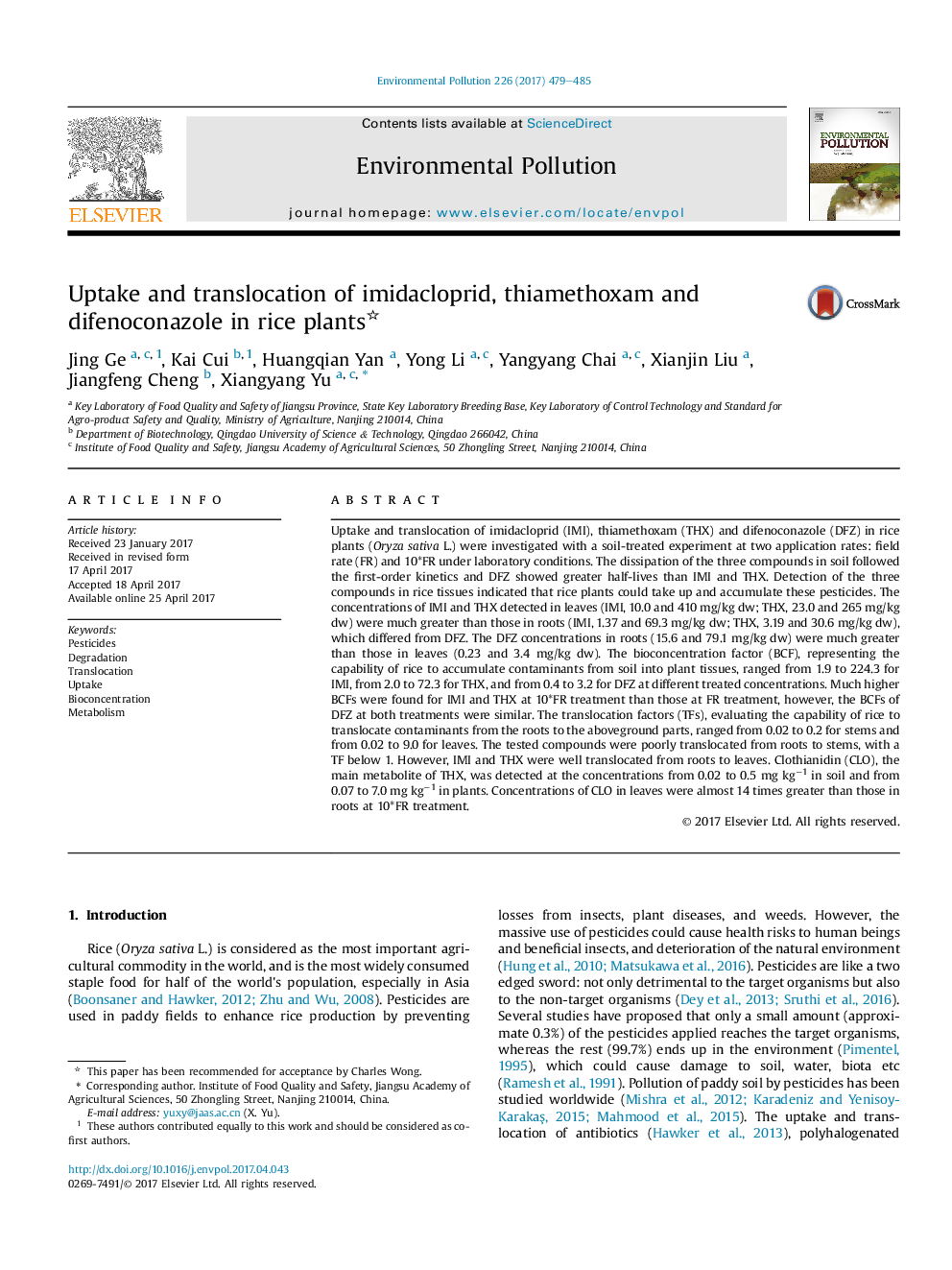| کد مقاله | کد نشریه | سال انتشار | مقاله انگلیسی | نسخه تمام متن |
|---|---|---|---|---|
| 5749111 | 1619147 | 2017 | 7 صفحه PDF | دانلود رایگان |

- Half-lives of DFZ in soil were greater than these of IMI and THIA.
- Uptake of IMI and THIA were higher than DFZ in rice plant.
- BAFs of IMI and THIA were greater at higher concentration.
- TFleaf of IMI and THIA in rice was much greater than TFstem.
- CLO, main metabolite of THIA, was detected in soil and plants.
Uptake and translocation of imidacloprid (IMI), thiamethoxam (THX) and difenoconazole (DFZ) in rice plants (Oryza sativa L.) were investigated with a soil-treated experiment at two application rates: field rate (FR) and 10*FR under laboratory conditions. The dissipation of the three compounds in soil followed the first-order kinetics and DFZ showed greater half-lives than IMI and THX. Detection of the three compounds in rice tissues indicated that rice plants could take up and accumulate these pesticides. The concentrations of IMI and THX detected in leaves (IMI, 10.0 and 410 mg/kg dw; THX, 23.0 and 265 mg/kg dw) were much greater than those in roots (IMI, 1.37 and 69.3 mg/kg dw; THX, 3.19 and 30.6 mg/kg dw), which differed from DFZ. The DFZ concentrations in roots (15.6 and 79.1 mg/kg dw) were much greater than those in leaves (0.23 and 3.4 mg/kg dw). The bioconcentration factor (BCF), representing the capability of rice to accumulate contaminants from soil into plant tissues, ranged from 1.9 to 224.3 for IMI, from 2.0 to 72.3 for THX, and from 0.4 to 3.2 for DFZ at different treated concentrations. Much higher BCFs were found for IMI and THX at 10*FR treatment than those at FR treatment, however, the BCFs of DFZ at both treatments were similar. The translocation factors (TFs), evaluating the capability of rice to translocate contaminants from the roots to the aboveground parts, ranged from 0.02 to 0.2 for stems and from 0.02 to 9.0 for leaves. The tested compounds were poorly translocated from roots to stems, with a TF below 1. However, IMI and THX were well translocated from roots to leaves. Clothianidin (CLO), the main metabolite of THX, was detected at the concentrations from 0.02 to 0.5 mg kgâ1 in soil and from 0.07 to 7.0 mg kgâ1 in plants. Concentrations of CLO in leaves were almost 14 times greater than those in roots at 10*FR treatment.
312
Journal: Environmental Pollution - Volume 226, July 2017, Pages 479-485